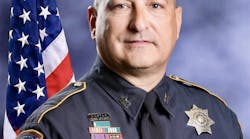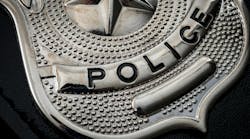Intisam Moosa was nervous, but reached out and touched a dog for the first time in her life.
The 22-year-old said that, although dogs are considered impure in her Muslim religion, her viewpoint changed when St. Paul police showed how useful dogs could be to find drugs and explosives.
The canine demonstration came at the St. Paul Police Department's first East African Junior Police Academy in February.
The St. Paul Police Department regularly holds citizen academies, including for youth, but this was the first one geared toward East African youth.
Police showed youth from immigrant populations what it's like to be a police officer. They hope to bridge cultural gaps, and recruit them, Cmdr. Matt Toupal said.
Although the Twin Cities has the nation's largest Somali-American population, St. Paul has only one Somali police officer.
"We need to have a police department that reflects the community in which we serve," Toupal said. "It is very true that we need representation in this department."
Most students at the academy, which spanned four Saturdays, were born in East Africa or their parents were.
Several of the students, ranging from 14 to 22, said that in the countries where they were born or where their families emigrated from, police were nonexistent or corrupt.
Moosa, one of four women and girls in the academy and who is from India, said she felt "less tension" around police after the second session; before the academy, she said, police always "seemed scary."
Khalid Hassan, whose family is from Yemen and Somalia, said as he started at the academy that he didn't like cops because they seemed "robotic."
Hassan, 16, said the program's self-defense and forensics lessons sparked his interest to join. In the sessions, students watched and even took part in jobs that police perform.
They used a Firearms Training Simulator machine (FATS) in the Ramsey County Law Enforcement Center, which Toupal said is like a video game but "very realistic and accurate." The simulator looks and feels like a real gun, he said; instead of using bullets, it shoots lasers onto a screen. Students also watched a bomb squad demonstration and toured the holding cells in the juvenile side of the Law Enforcement Center .
At the second session, Hassan said his view of police officers in the United States had changed.
"Cops aren't too strict (in Minnesota), but strict enough," he said, adding he is considering becoming a police officer.
A graduation ceremony will take place Saturday at police department headquarters in St. Paul.
FEDERAL FUNDING FOR OUTREACH
The police department began efforts to engage with the Somali-American community in 2004, which laid the groundwork for the African Immigrant Muslim Community Outreach Program in 2009.
Funded largely by a two-year federal grant, AIMCOP received $670,679 to develop mentoring programs with the Muslim and Somali communities, an athletic league and meetings at mosques and community centers to discuss crime prevention. Other groups -- including the FBI, the U.S. attorney's office and the Ramsey County Sheriff's Office -- are involved.
Many of the students said they learned about the academy from leaders in their mosques and community centers, including the Minnesota Da'wah Institute on University Avenue, where St. Paul police have held monthly meetings to build relationships and trust.
Kassim Busuri, a refugee from Somalia and an administrator and education director at the Minnesota Da'wah Institute, said about 15 young people from his center participated in the academy.
He said the center's young people, most of whom are Muslim with East African roots, have enjoyed how St. Paul police have engaged in activities with them, such as basketball games, and mentored them during monthly meetings.
"When (the kids) see law enforcement, they ... don't want to open up," Busuri said. "In East Africa, most of the time, the police are corrupt and they can't be trusted at all. The kids are seeing that (local police) are not the corrupt officers they had in East Africa."
'BUILDING TRUST'
Born in Ethiopia, Khalid Hussein, an academy participant, grew up in Kenya where he said police officers were came from criminal backgrounds.
"They treat you really bad," Hussein said of police in Kenya. "They take any bribe. They don't care."
Hussein, a senior at Como Park Senior High School, said that since he moved to Minnesota in 2006, he has recognized that U.S. law enforcement officers adhere to laws and that citizens are allowed more freedoms. He said he is considering becoming a police officer or studying law at the University of Minnesota.
"It's about building relationships and building trust," Toupal said about the outreach programs. "It doesn't happen overnight. It's about consistency and transparency."
New police officers in the department receive diversity training, including information about the Somali community and Islam.
Of 576 sworn officers, about 18 percent are women, police spokesman Howie Padilla said. Nearly 70 percent of the department is white, with the next leading ethnicity Asian, followed closely by black and then Hispanic."
More than 100 officers have worked with Somali community members, police spokesman Howie Padilla said.
In Minneapolis, more than three-quarters of the police department is white and about 85 percent male, spokesman John Elder said.
To improve relations with the Muslim community, the department is looking into allowing female Muslim officers to wear a hijab (headscarf) on duty.
Cities in Canada and in Great Britain allow female Muslim officers to wear police-issued hijabs while in uniform.
"If you can still perform the activities, it shouldn't matter what you wear," Moosa said.
A FOAM BAT TO TEACH FORCE
One academy goal, Toupal said, was to show the students how they may have misinterpreted police's intentions if they see officers using force on a suspect.
During an afternoon session in a gym behind the department's old headquarters on Feb. 8, the students were taught defensive tactics. Dressed in a red padded suit, Cmdr. Axel Henry told students, "We are in the business of protecting people from bullies, not being bullies." He told kids to stop hitting the suspect once he or she is on the ground.
Equipped with a foam bat, the kids each played the role of an officer and took practice turns hitting Henry, some using a commanding voice ordering him to drop, others playfully whacking him amid whoops of laughter from both peers and officers.
"You don't get a lot of these types of opportunities to see what a job is going to be like," Hussein said of the academy.
Yahye Awad speaks four languages, having lived in Somalia, where he was born, and Kenya and Texas, where he learned Swahili and Spanish, respectively, he said. He said the department could benefit from having him an interpreter.
He was applauded for keeping a level and authoritative voice during the self-defensive tactics exercise.
"I'm going to be the right fit for the department, I think," he said.
Copyright 2014 - Pioneer Press, St. Paul, Minn.
McClatchy-Tribune News Service


